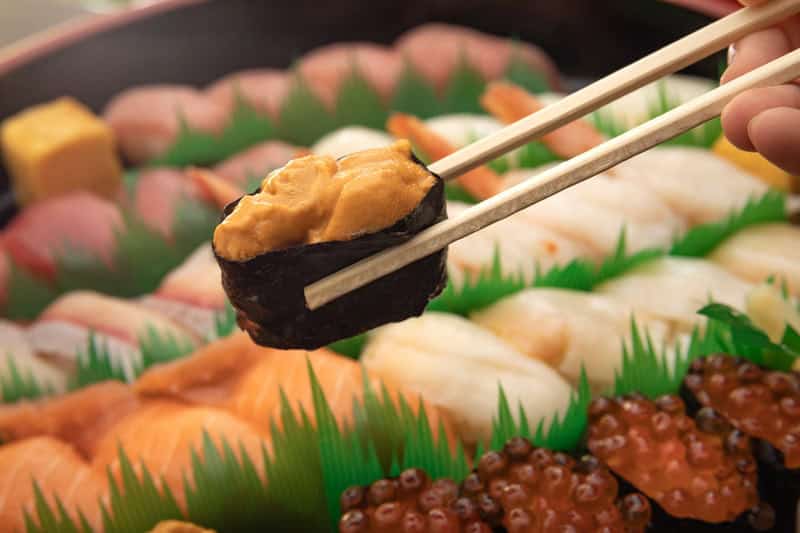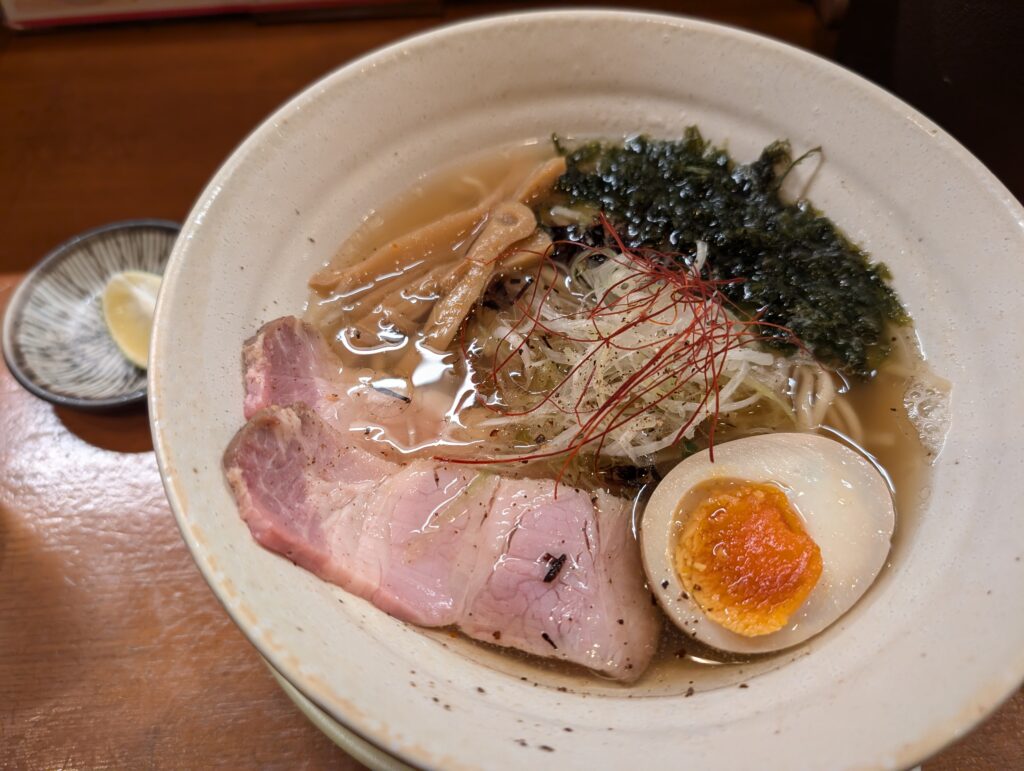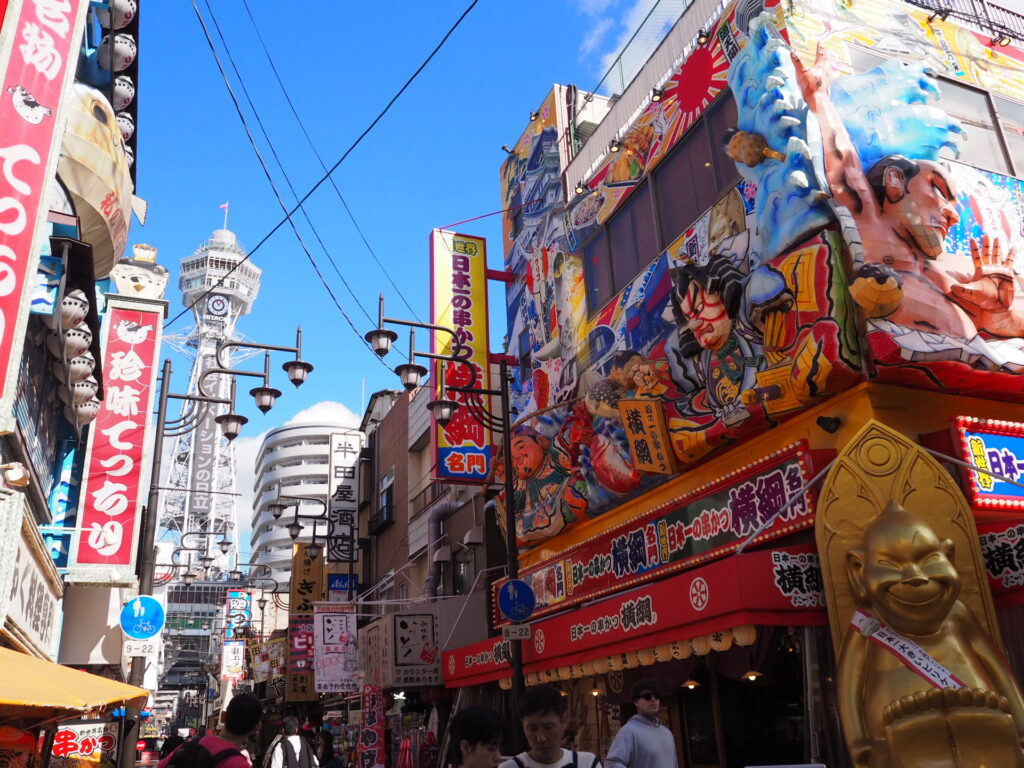Conveyer belt sushi is an essential part of life for locals. Is it difficult to enter a conveyor belt sushi restaurant? Don’t worry! I will tell you how to enjoy at a conveyer belt sushi restaurant.
1.Entrance Procedures: Many restaurants have electronic panels or reception desks at the entrance where you can easily check for available seats or register for a waiting list.
2.Choosing Seats: You can choose between counter seats or table seats. At the counter, you can pick sushi directly from the conveyor belt, while at a table, you can enjoy the experience with family or friends.
3.Menu:The menu is often displayed with images for easy understanding. More and more restaurants are also offering menus in English and other languages.
4.How to Order:You can take sushi directly from the conveyor belt, but you can also order using the touch panel at the table or an order sheet. This is particularly convenient for ordering popular items or seasonal menus.
5.Payment:When you finish eating, a system automatically counts the number of plates or items ordered at your table. You call a staff member to complete the payment.
Are you set to go? Let’s dive into this adventure together and go to Kura Sushi today!

Here we are! ‘Kura’ means “warehouse” or “storehouse” in Japanese. In the context of Kura Sushi, the name reflects the concept of storing and serving fresh, high-quality ingredients. It’s all about delivering delicious sushi in a fun and efficient way! Now, Let’s go inside.
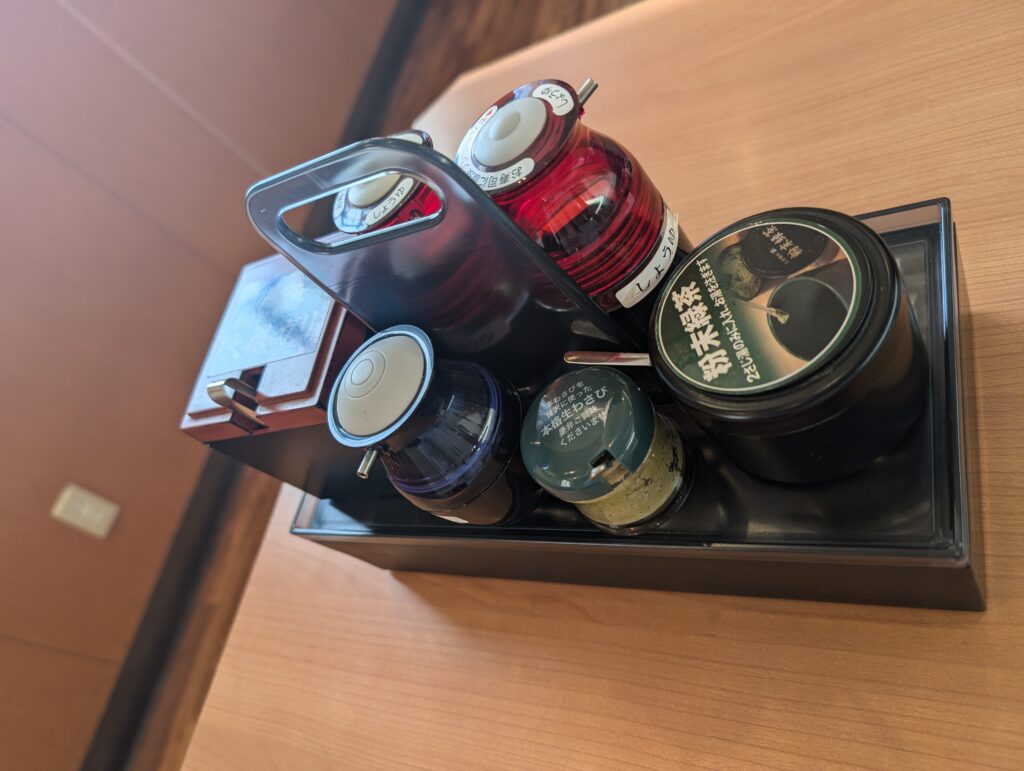
Once you’re seated, there are a few things you need to prepare first. In the small box on the table, there are chopsticks. On top of the square box, going counterclockwise, there is pickled radish (gari), ponzu sauce, wasabi, powdered green tea, and two soy sauce containers. Let’s prepare some tea and a hand towel first. You can take the cup and hand towel from the lane above. Each table is equipped with a hot water tap. Add some powdered green tea into the cup you took earlier and pour hot water. To dispense the hot water, press the black button with the cup. Be careful, as the water is really hot. If you prefer to drink water instead of tea, the water dispenser is often located near the entrance. Please ask the staff for assistance. Wipe your hands with the hand towel, and you are ready to eat!
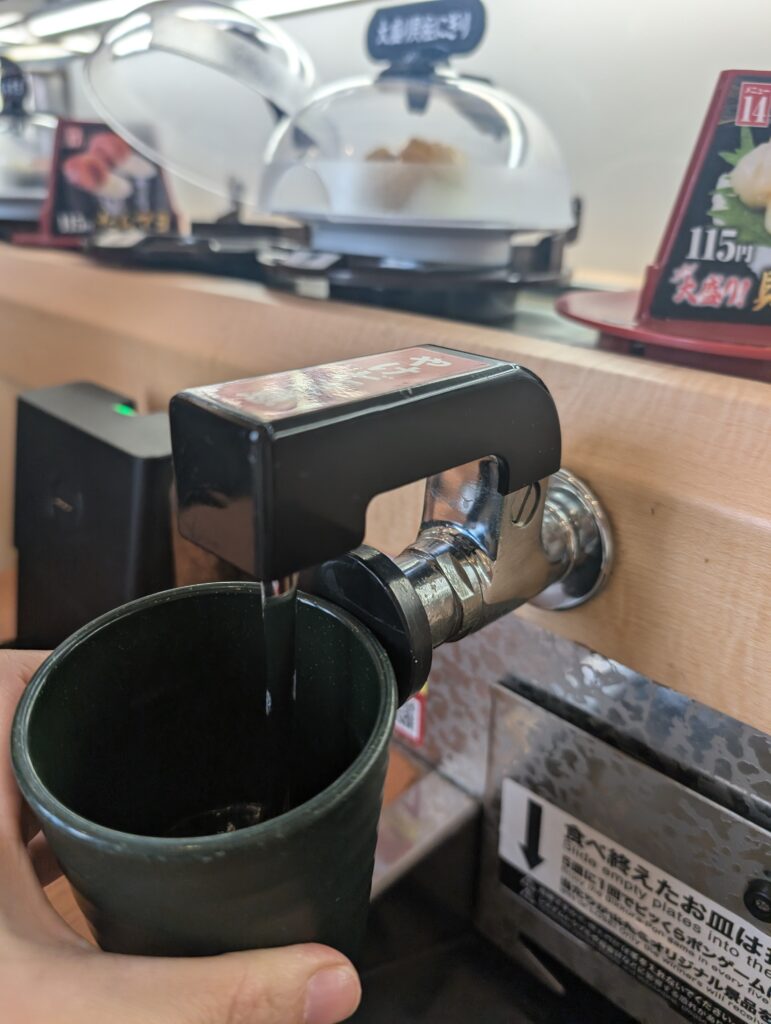
There are two ways to get sushi: you can either take it from the conveyor belt or order it from the touchscreen panel next to the tap. The sushi on the conveyor belt comes around randomly, so take what you like. Please be careful not to return anything once you’ve taken it. The items ordered from the touchscreen panel will come on the upper conveyor belt and stop in front of your seat. Worried you might forget to take them? Don’t worry! The touchscreen panel will announce, ‘Your order is about to arrive,’ so you won’t miss it.
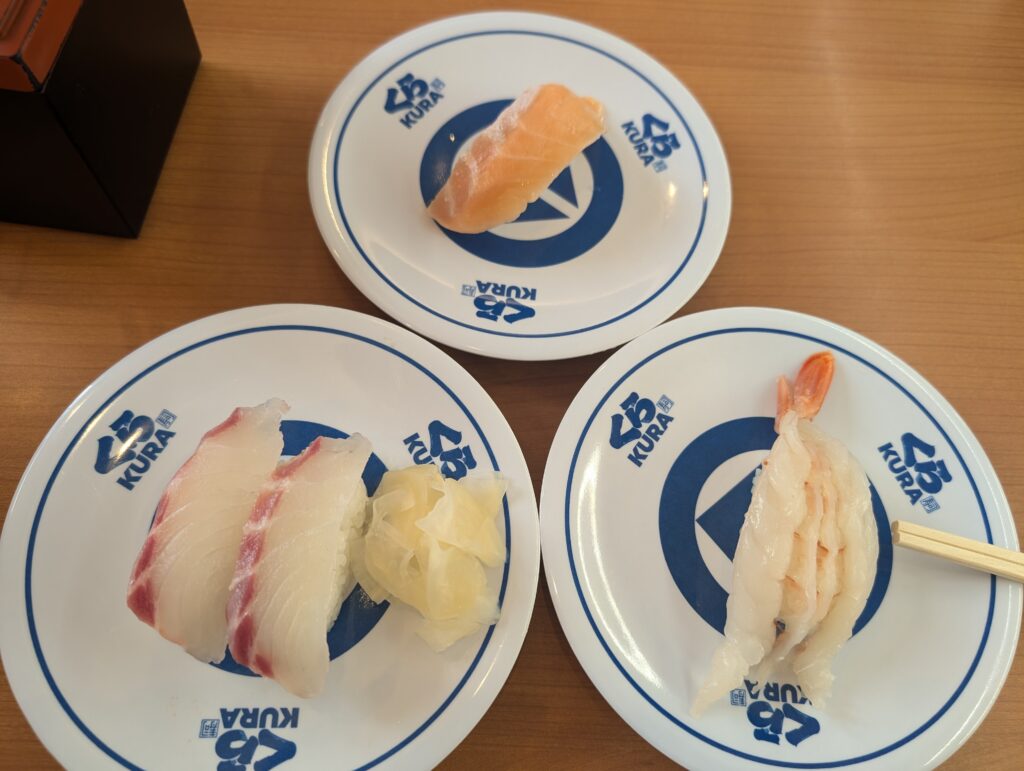
Itadakimasu! All of them are without wasabi, so you can add it to your liking. Be careful not to use too much soy sauce. In the past, when I went to a traditional, non-conveyor belt sushi restaurant, I was taught the correct way to use soy sauce. When I went to a traditional, non-conveyor belt sushi restaurant, I learned a way to apply soy sauce that I have been using ever since. It seems not many Japanese people know about it. It’s a method using gari (pickled ginger). You pour soy sauce into a separate dish, dip a piece of gari in the soy sauce, and then use the gari to apply the soy sauce to the sushi topping. A unique technich, right? Of course, the gari used as a brush can also be eaten, so nothing goes to waste.
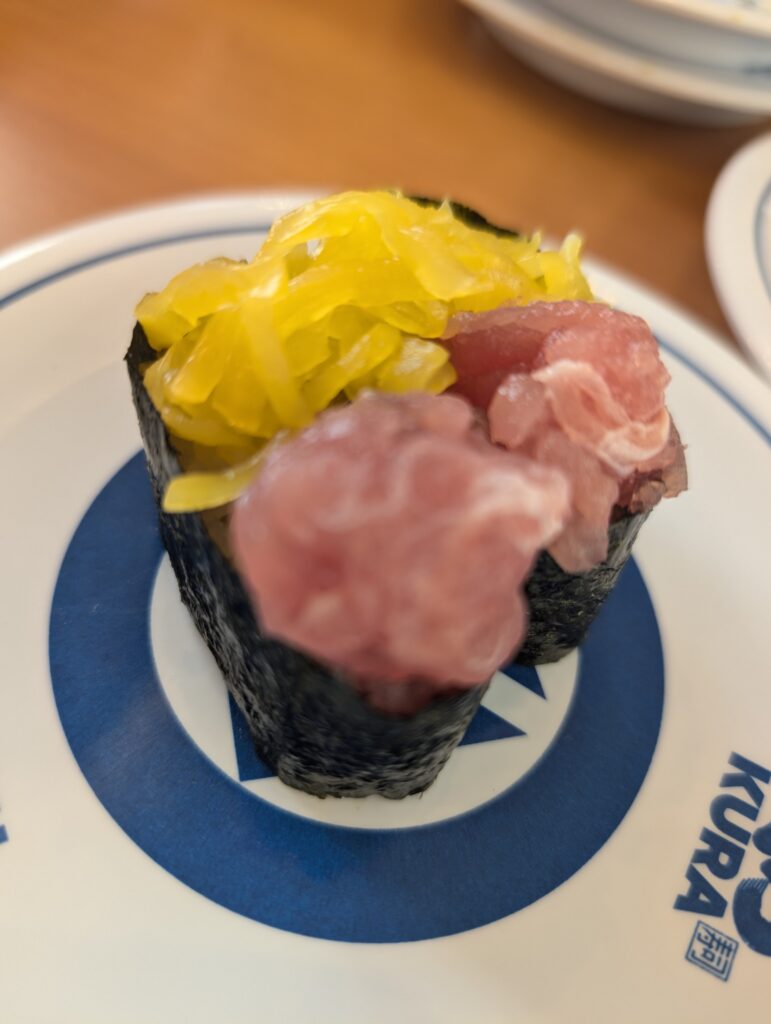
This is a tuna and pickled radish gunkan-maki. It typically consists of a small, oval-shaped ball of sushi rice topped with various ingredients such as seafood, vegetables, or roe. A strip of nori (seaweed) is wrapped around the rice and filling to hold everything in place. The selection of toppings is abundant, ranging from standard to creatively arranged options.
Actually, even if you’re not a fan of raw fish, you can still enjoy conveyor belt sushi. They offer a wide range of non-sushi items like udon, ramen, fried chicken, and also desserts.
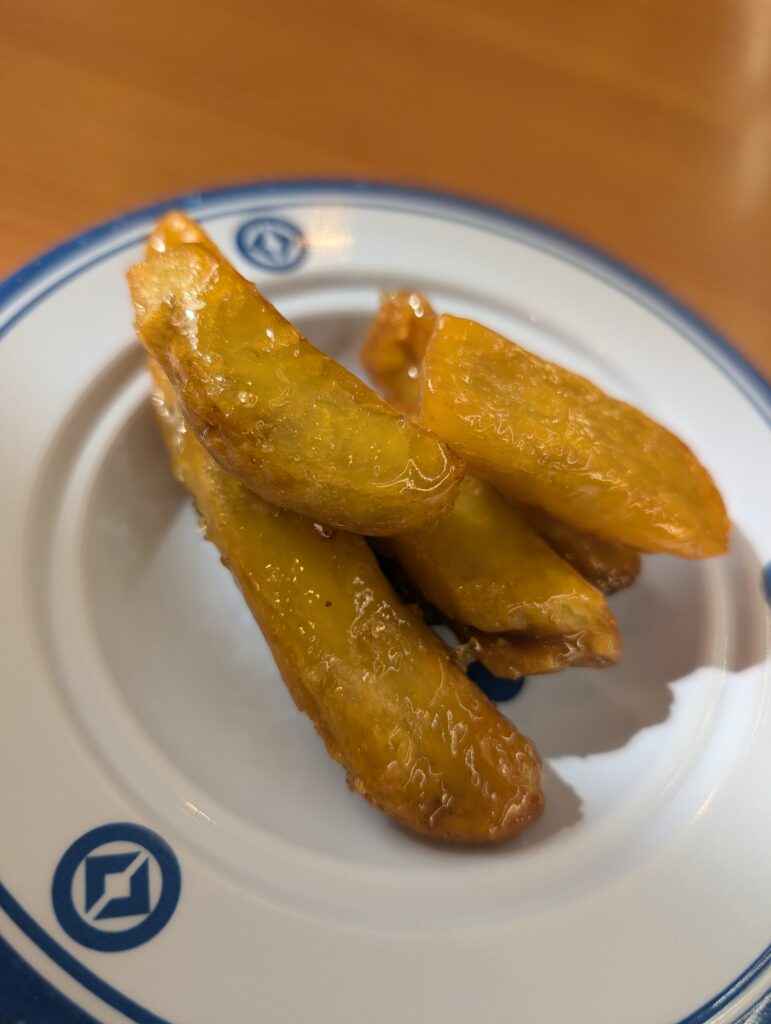
Here is today’s dessert, Daigaku imo. It is a popular Japanese sweet snack made from sweet potatoes. The name “daigaku imo” translates to “university potatoes,” as it was historically sold near universities in Tokyo. Daigaku imo, made by coating sweet potatoes with a sweet and savory sauce made from soy sauce and sugar, has a crispy exterior and a soft interior, allowing you to enjoy a delightful texture. The features of Kura Sushi are not just offering high-quality sushi at an affordable price. There is also enjoyment after the meal!
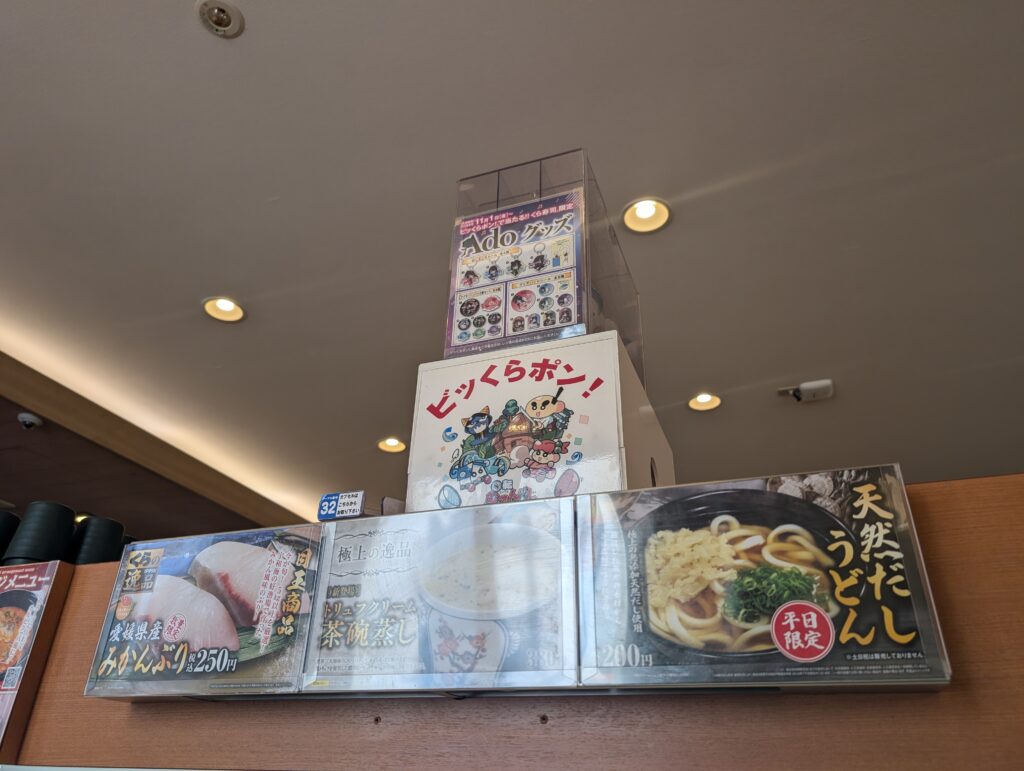
For every certain number of plates you eat (usually five), you get a chance to play a capsule toy game. If you win, a toy or prize will be dispensed from the gachapon machine. It’s an exciting way for both kids and adults to enjoy their meal and potentially win some fun prizes. It’s definitely intriguing how the Bikkura Pon game works, isn’t it?
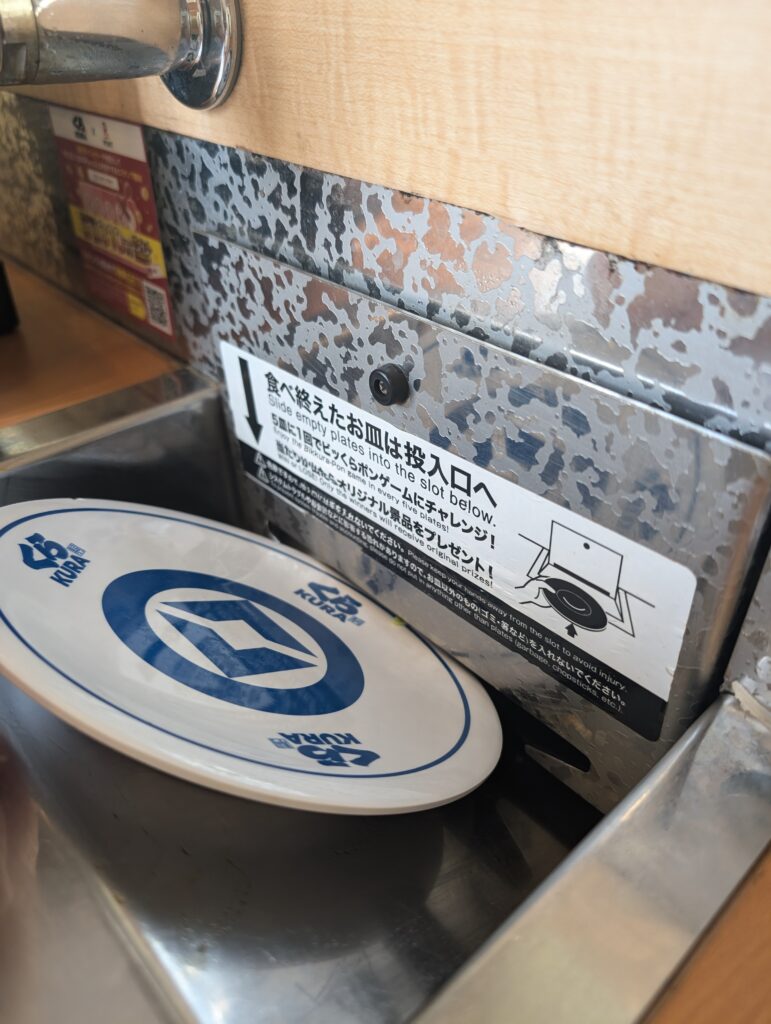
When you insert the finished plates into the slot on the table, it automatically counts the number of plates you’ve eaten. The capsule toy prizes are regularly updated and often feature collaborations with popular anime and characters. So, did you get full? It’s time to say ‘Gochisosamsa deshita’. You press the payment button on the touch panel and pay at the self-checkout.
Finally, conveyor belt sushi is a wonderful way to casually enjoy Japanese culture. Even first-timers can have a delightful dining experience by following basic procedures. Each restaurant has its own unique features and menu, so be sure to visit various conveyor belt sushi places.

